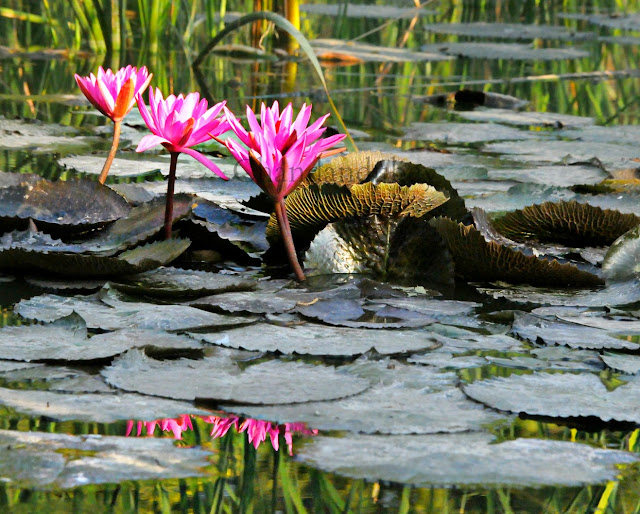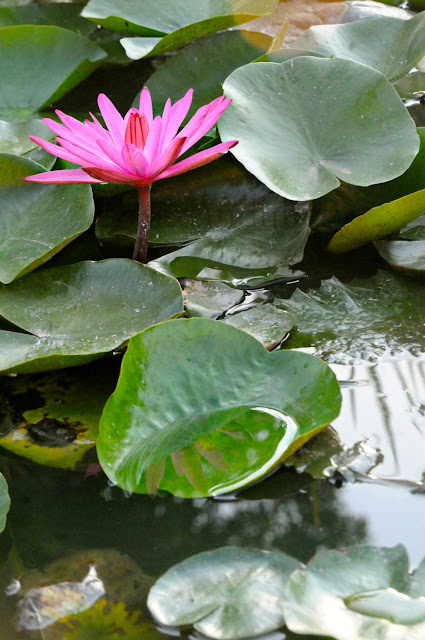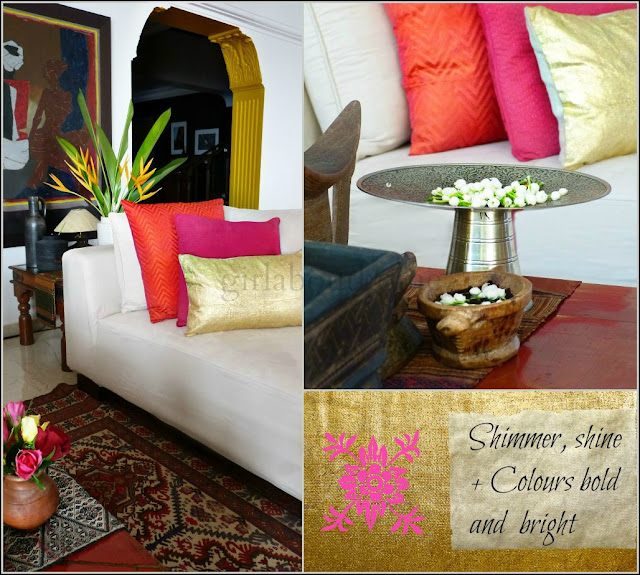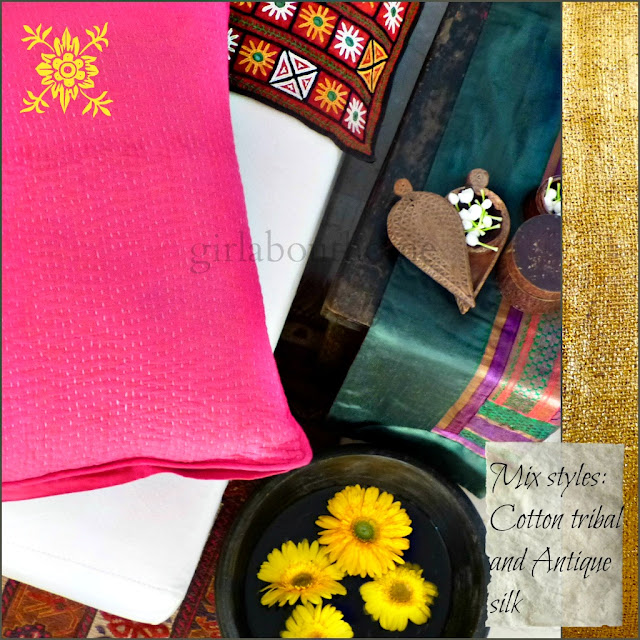Much is being said about the modern Indian design idiom. One that hand picks from rich, age old traditions and combines them with contemporary western influences, with dramatic yet non fussy and uncluttered results.
This striking of a fine balance between the old and the new, to lend an impression of careful yet casual approach to living spaces, takes plenty of effort and dexterity. The designer/ architect needs to be in constant touch with the past with an eye to the future. It is a way by which the past techniques are successfully preserved for some more time to come, rather than merely sink into redundancy. On most occasions, the same is achieved through enlisting the help of local master craftsmen and builders. Compiling a few vignettes from traditional Indian ways of dressing spaces. The few images in todays post are from Rajasthan- a state steeped in rich architectural traditions and history not only well preserved but actively and delightfully appropriated in the context of revived and newer buildings.
Consider the use of a variety of unfinished and partially restored wall finishes to dress up this corner in a rennovated fort in Udaipur (above). Traditional wall finishes such as old tiles, painting, inlay and relief work mingles with newer, irreverent addition of finely scrawled urdu in places on a partially restored wall. The patina of aged wood and intense colours of a cotton leheriya bolster fabric contrasts with the carefully maintained impression of age set against the old and new wall.
Framed jharokha, and partially restored walls and tile work give a traditional dimension to this private nook of a restored old fort.
Newly planted Plantain trees throw intense shadows on a traditional yet minimal wall.
An old elephant set with its intense colours, inlay work and gentle relief work is the only adornment in a mostly open, white minimal space .















































